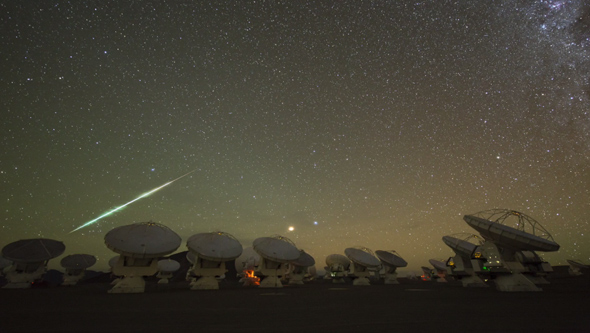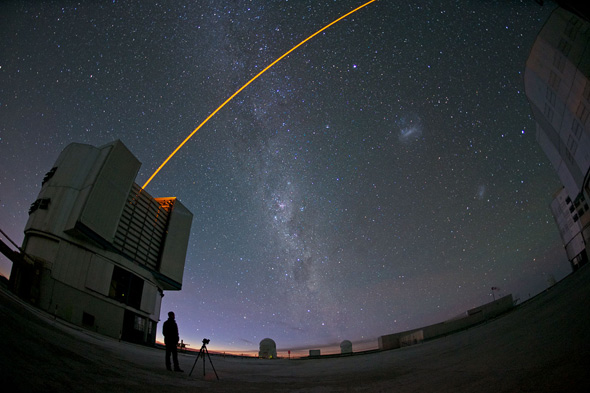Time-Lapse: The ESO Observatories
The northern part of Chile is a forbidding and remote desert. Called the Atacama, it is one of the driest places on Earth, and also reaches high elevations; in some places the desert floor is 4,000 meters above sea level … and that’s not counting the numerous mountains and volcanoes that stretch even higher.
All of this is why the Atacama is home to some of the finest astronomical telescopes observatories on the planet. The clear air lets through a lot of light, visible light as well as other flavors invisible to the eye, and the landscape is dotted with bizarrely shaped observatory buildings and arrays of dishes pointing skyward.
The European Southern Observatory commissioned some of the best astrophotographers in the world to travel to Atacama and capture the ethereal and literally unearthly beauty of the desert … and one of the results is this wonderful time-lapse video called “The ESO Observatories: Atacama Transitions and Landscapes under the Southern Sky” taken by friend-of-the-BA-blog Christoph Malin. Watch.
There’s a lot to see, but I think my favorite is at 6:45, when a bright fireball lights up the sky (that’s the still at the top of this article); you can actually see different colors in the meteor streak, most likely due to different elements burning off it as it plunged into our atmosphere from space.
Right after that, you can watch as the multiple dishes of the ALMA array dance in synchronized perfection, moving in unison to capture faint millimeter waves trickling down from distant cosmic sources.
Also, starting at about 9:50, the buildings housing the magnificent four-part Very Large Telescope come into view, each an 8.2 meter behemoth. At first it’s quite normal appearing, but then the powerful laser erupts from one building, a science-fictional beam that is used to aid the telescope in removing distortion from the ocean of air above our heads. As you can imagine, they have to be careful and coordinate with the local air traffic authorities; such a device wouldn’t be a good mix with an airplane flying into the beam.
Finally, I want to point out a phenomenon that is both subtle and astonishing: At 10:20, with the Milky Way’s companion galaxies the Magellanic Clouds hanging on the left and a mountaintop silhouetted in the center, you can see faint, colorful bands of light moving in from the right side of the frame. This is almost certainly airglow, caused by atoms and molecules nearly 100 kilometers above the ground giving up the energy they absorbed from the Sun during the day. This commonly is red and green, as seen in the video.
The ripples in them are amazing. There is wind in the air, even so high off the ground. If it blows steadily across the air below it, ripples can form in the boundary layer (they can also be caused by atmospheric disturbances like thunderstorms, too). These are called gravity waves (the Earth’s gravity fights with buoyancy, and the result is the oscillation of the air, moving it up and down like a cork in water). It’s similar to the phenomenon of ship wave clouds, which happen much closer to the ground.
As usual, there’s far more going on over our heads than we appreciate. Sometimes, it’s when we train our cameras to the sky—and allow them to play with time and space and brightness and color—that we can truly see the exquisite machinery of the heavens.



